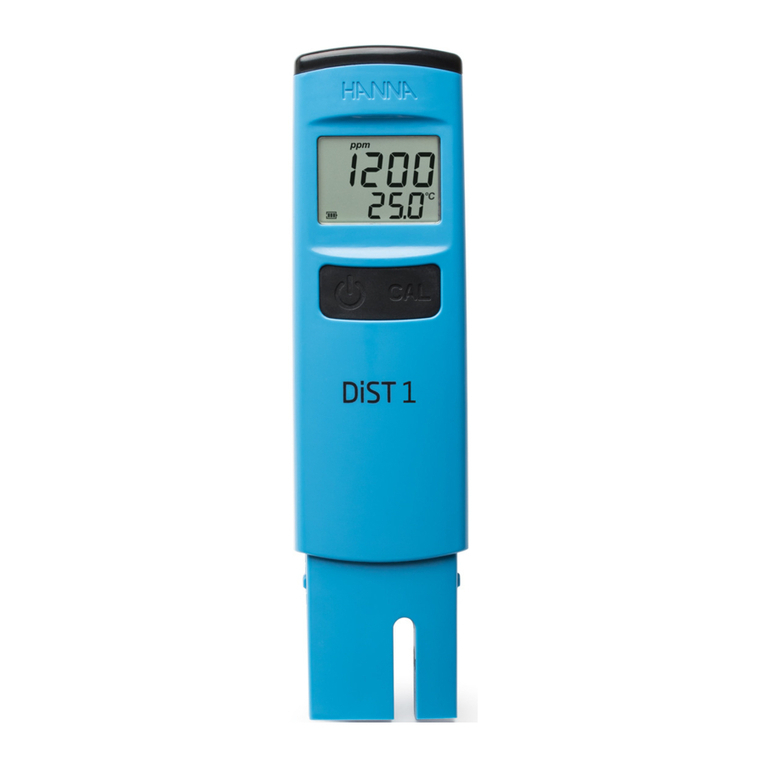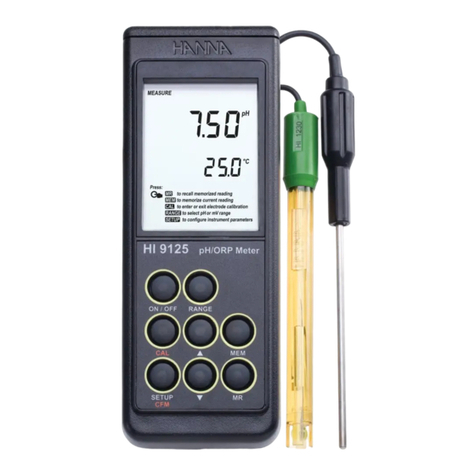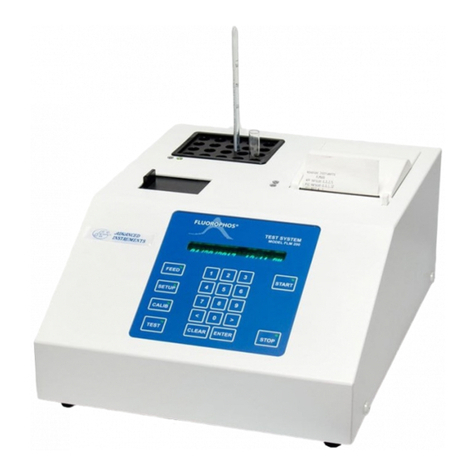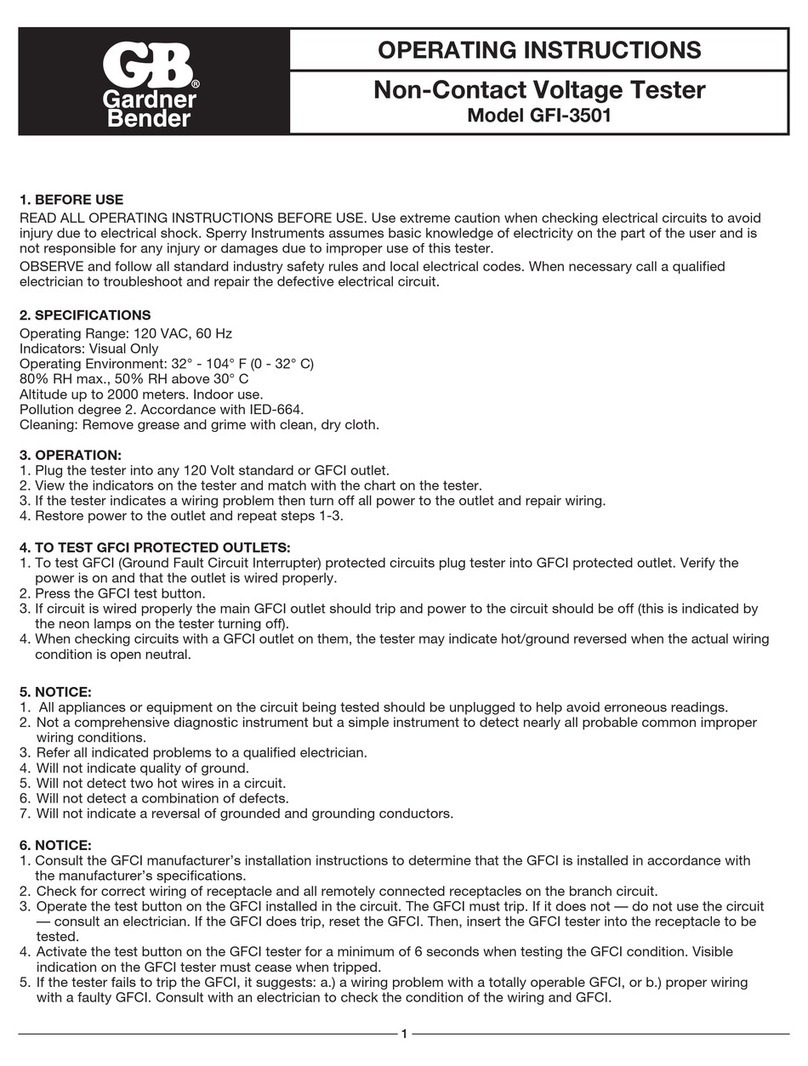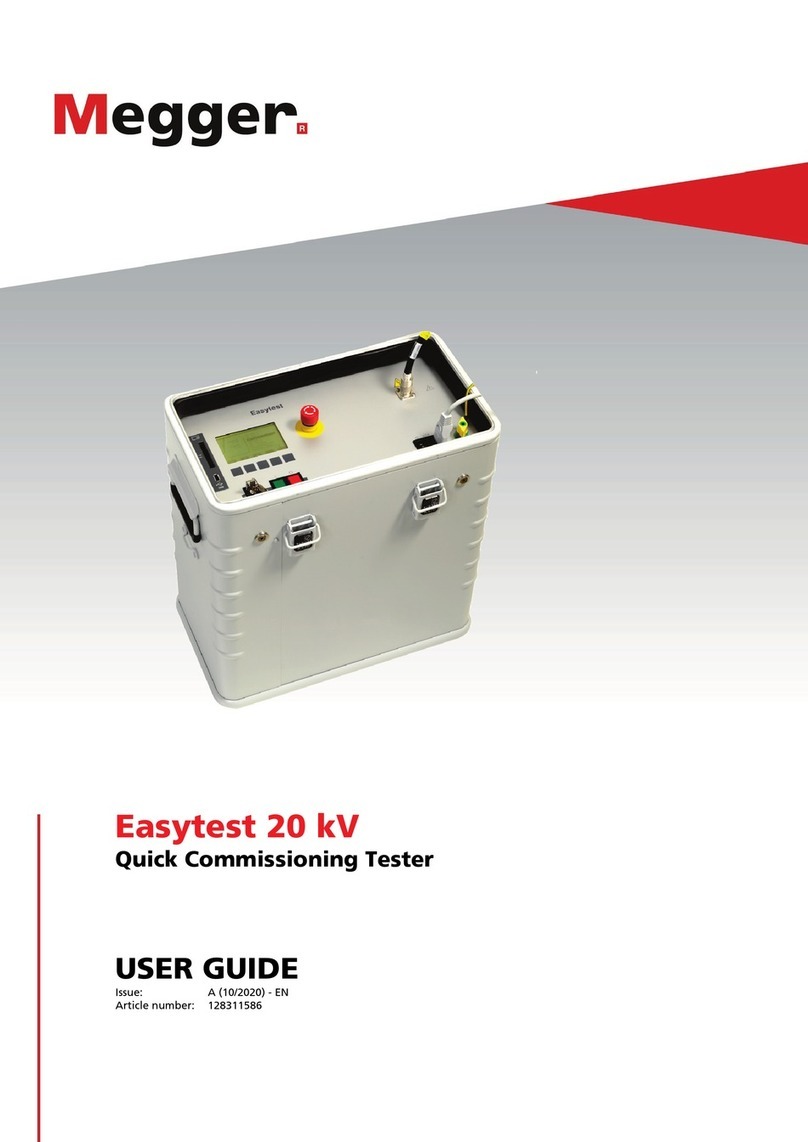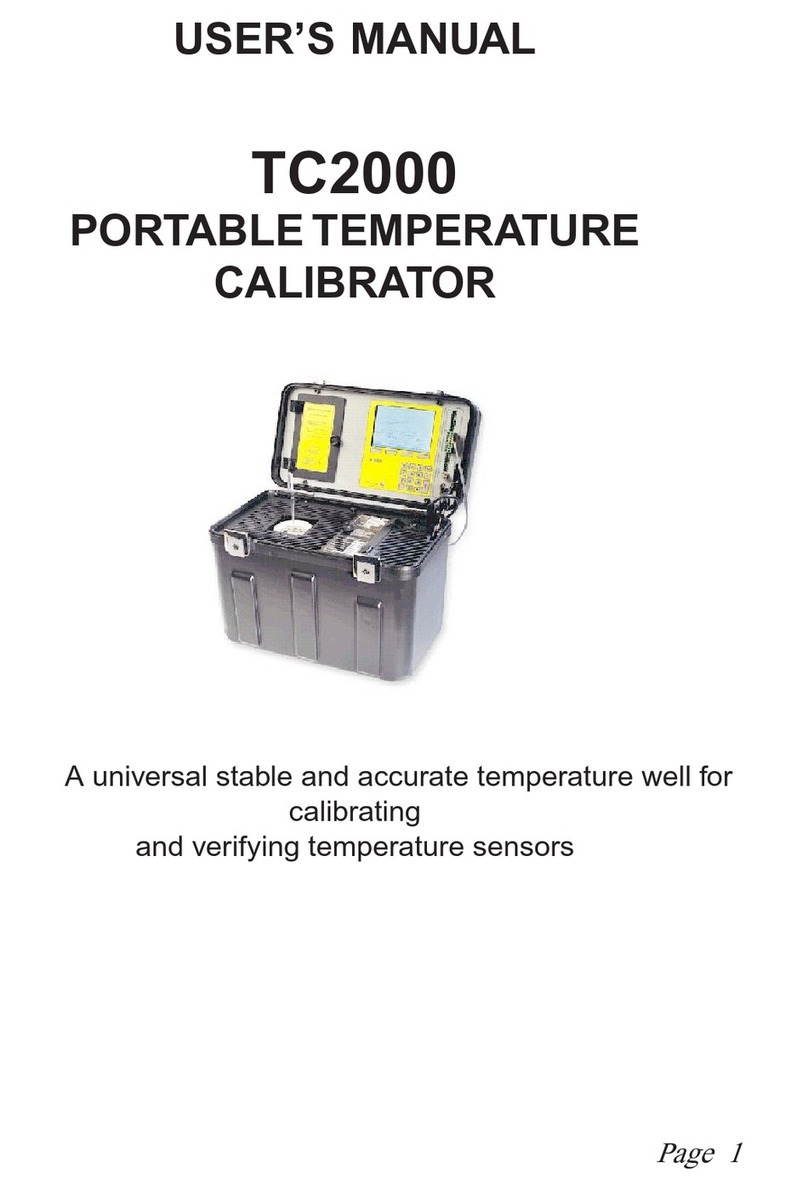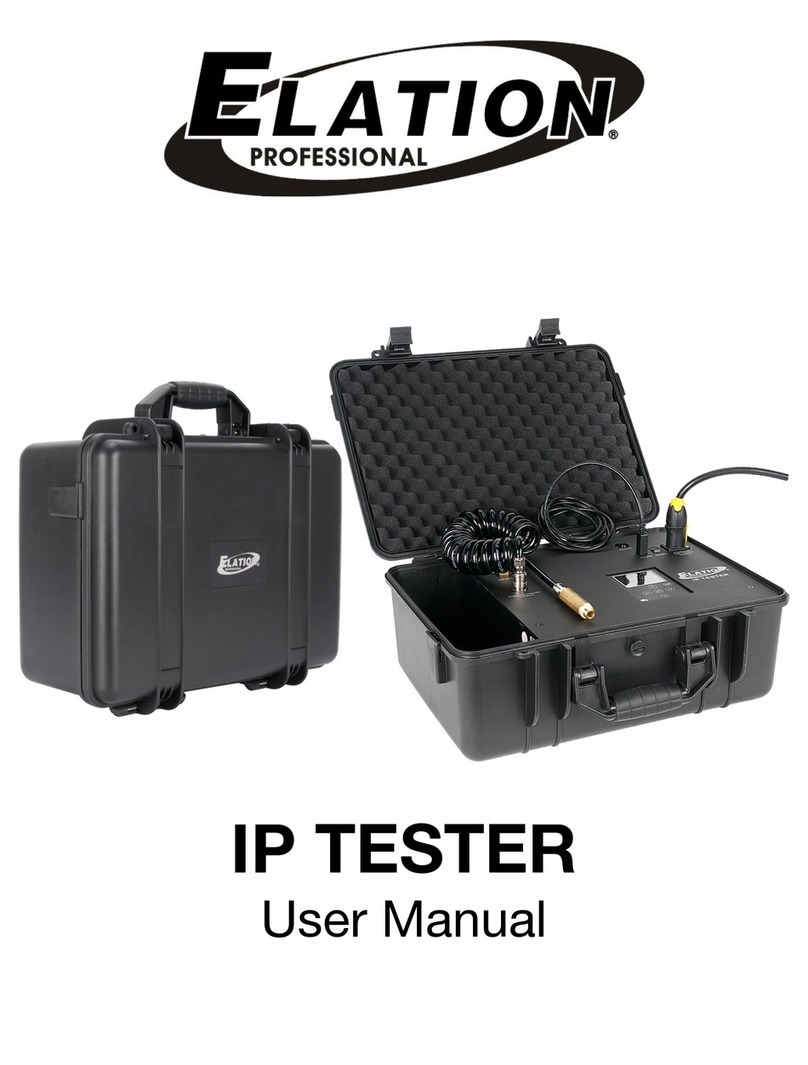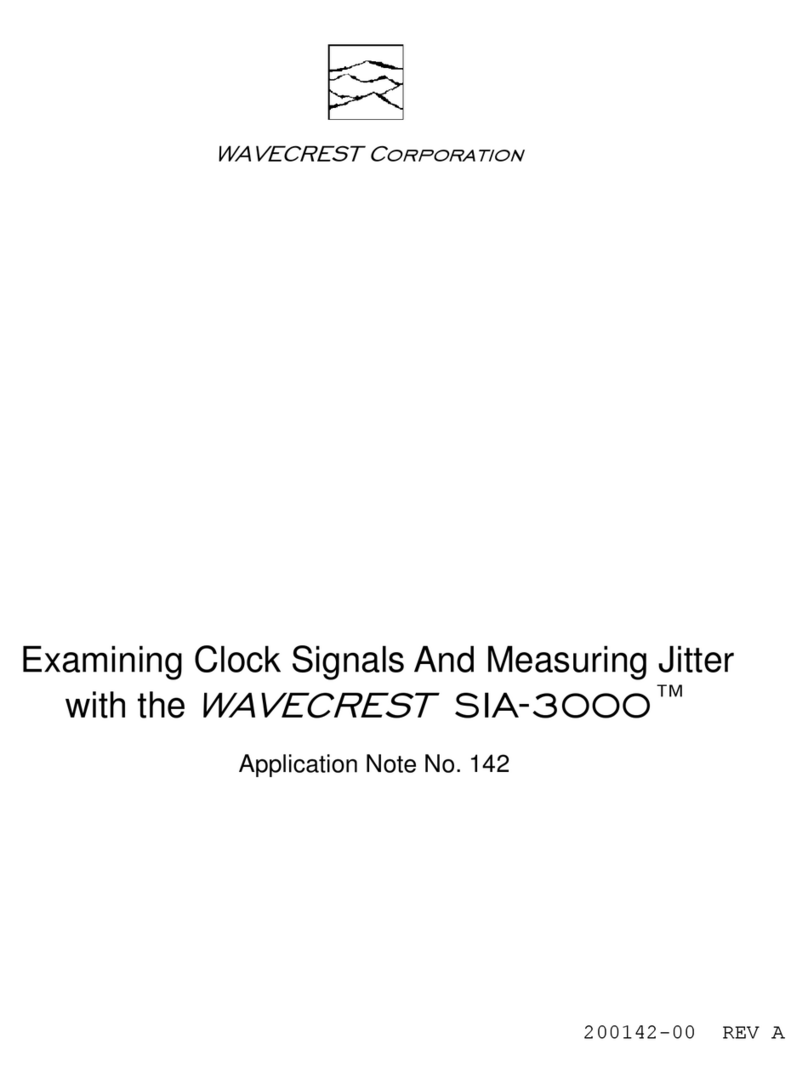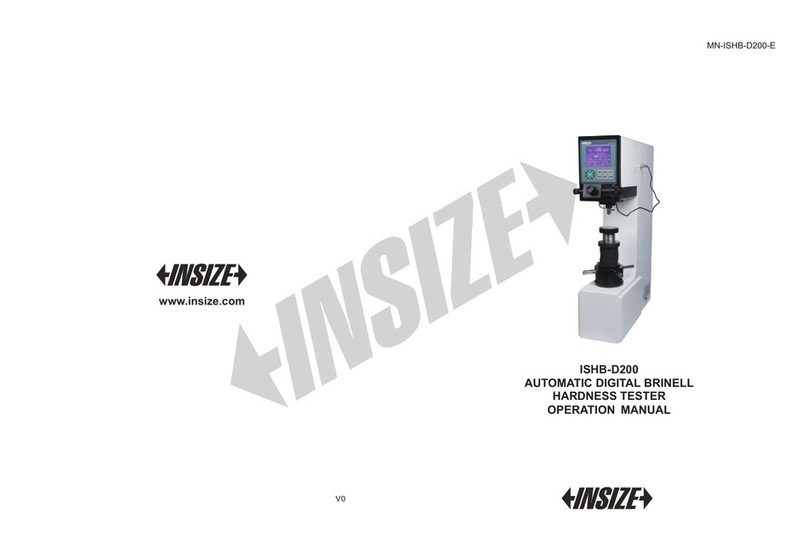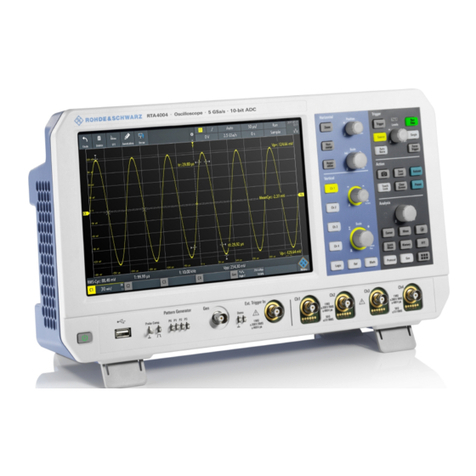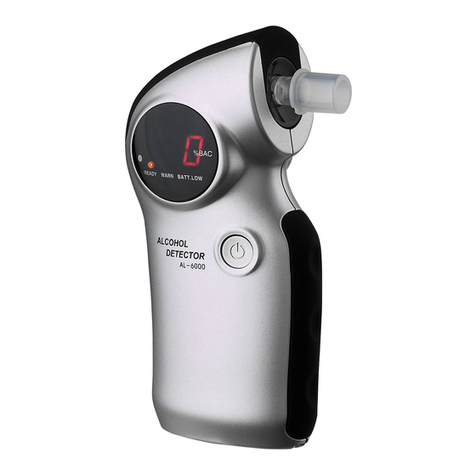Hanna FC 300 User manual

1
FC 300FC 300
FC 300FC 300
FC 300
Combination Sodium
Electrode
Instruction Manual

23
FC300 Combination Sodium ElectrodeFC300 Combination Sodium Electrode
FC300 Combination Sodium ElectrodeFC300 Combination Sodium Electrode
FC300 Combination Sodium Electrode
I.I.
I.I.
I. IntroductionIntroduction
IntroductionIntroduction
Introduction
The Hanna FC300 Sodium electrode is a glass combina-
tion ion selective electrode designed for the measurement
of sodium ions in aqueous solutions such as water, food,
beverages, wine, beer and soil.
The electrode utilizes a special glass membrane that is
selective to sodium ions. The internal reference electrolyte
chamber is refillable.
IIII
IIII
II. SpecificationsSpecifications
SpecificationsSpecifications
Specifications
Type: Glass combination ISE with
Ag/AgCl reference
Ion measured: Sodium (Na+)
Measurement range: 1M to 1X 10-5M
39100 to 0.039ppm
Operating Temperature: 0-80°C
Operating pH: 9.75-14 pH
Dimensions: 12 mm (OD) x 120 mm
insertion (0.47”x 4.72”)
Connection: BNC Plug
Wetted Materials: glass, ceramic
III.III.
III.III.
III. Theory of Operation:Theory of Operation:
Theory of Operation:Theory of Operation:
Theory of Operation:
The FC300 sodium electrode is a potentiometric device
used for the rapid determination of free sodium ions in
water, soft drinks, beer, wine, and soils. The electrode
functions as a sensor or ionic conductor. The FC300 is a
combination electrode that does not require a separate
reference electrode to complete its electrolytic circuit. The
selective glass membrane blown on the tip of the sensor
exchanges ions with the sample solution which produces a
voltage on the surface of the membrane. This creates a
charge imbalance between the test solution and internal
cell of the sensor. This exchange on the external surface
produces a voltage that changes in response to the sample’s
ion activity. When the ionic strength of the sample is fixed,
and hydrogen ions are eliminated, the voltage is propor-
tional to the concentration of sodium ions in solution. The
sensor follows the Nernst Equation:
E = Ea + 2.3 RT/nF log A ion
E = observed potential
Ea= Reference and fixed internal voltages
R = gas constant (8.314 J/K Mol)
n= Charge on ion (equivalents/mol) (1+)
A ion = ion activity in sample
T = absolute temperature in K
F = Faraday constant (9.648 x 104 C/equivalent)
Interference:
Ratio of interfering ion to Na+must be below
.0001 for H +
1 for K +
Note: other monovalent
cations may also
increase sodium
readings.

45
dIV. Design elements of the FC300 electrodesDesign elements of the FC300 electrodes
Design elements of the FC300 electrodesDesign elements of the FC300 electrodes
Design elements of the FC300 electrodes rrrrreproduc-
ible potential.
V.V.
V.V.
V. Equipment requiredEquipment required
Equipment requiredEquipment required
Equipment required:
•Hanna FC300 combination electrode with HI 7079 fill
solution.
•Hanna 931100 portable waterproof Sodium meter
that reads out in units of g/L NaCl.
•Hanna 931101 portable waterproof Sodium meter
that reads out in units of mg/L, g/L Na+,pNa
•Hanna 931102 portable waterproof Sodium meter
that reads out in units of g/L or % NaCl
•Hanna HI 4222 pH/ISE/mV meter or other suitable
ion or pH/mV meter. (Note: log/linear graph paper is
useful if an ISE (ion) meter is not available.
•Hanna HI 180 magnetic stirrer or equivalent with
stirring bars (HI 731320). (Note: isolate beakers from
stirrer motor heat by placing insulating material such
as foam or cork between them).
•Hanna HI 76404 electrode holder or equivalent.
•Plastic beakers (HI 740036P) or other suitable mea-
surement vessel.
VI.VI.
VI.VI.
VI. Solutions RequiredSolutions Required
Solutions RequiredSolutions Required
Solutions Required
Standards for Sodium Measurements
Select appropriate Hanna Instruments standard and ISA
from the list below: Part number
0,1 M sodium solution HI 4016-01
10 ppm sodium solution HI 4016-10
100 ppm sodium solution HI 4016-02
1000 ppm sodium solution HI 4016-03
30.0g/L NaCl solution (500mL) HI 7081L
3.0g/L NaCl solution (500mL) HI 7083L
0.3g/L NaCl solution (500mL) HI 7085L
2.3g/L sodium solution (500mL) HI 7080L
0.23 g/L sodium solution (500mL) HI 7087L
Reference Fill Solution (500mL) HI 7079
ISA (500mL) HI4016-00
HI7090L
Storage Solution (500mL) HI4016-45
Conditioning /Etchant solution HI 4016-46
Using volumetric pipettes and glassware make dilutions of
the standard to bracket the concentration of the samples.
Standards with concentrations less than 10-3M (100 ppm)
should be prepared fresh daily. Store solution in a tightly
sealed bottle without ISA added. 10 mL of HI 4016-00 , or
HI7090L should be added to each 100 mL sample of stan-
dard and samples just prior to measurement. This ISA
buffers the pH of the sample or standard to about pH 9.8
thus removing hydrogen ion as an interference. It also
provides samples and standards a constant ionic strength
background that stabilizes the solutions activity coefficient
and permits concentration to be measured directly.
Sodium Selective Membrane
Ceramic junction
HI 7079 Fill Solution
Fill hole

67
VII.VII.
VII.VII.
VII. General GuidelinesGeneral Guidelines
General GuidelinesGeneral Guidelines
General Guidelines
•During measurement always operate electrode with
the fill hole open.
•Verify protective cap has been removed.
•During normal use, fill solution will slowly drain out
of the ceramic junction located on the side of the the
electrode. Excessive loss (>2 cm drop within 24 hours)
is not normal.
•Add fill solution daily to maintain a good head
pressure. For optimum reference response, this level
should be maintained and not be allowed to drop
more than 2-3 cm (1-inch) below fill hole.
VIII.VIII.
VIII.VIII.
VIII. Electrode PreparationElectrode Preparation
Electrode PreparationElectrode Preparation
Electrode Preparation
Before using the electrode for the first time or if reactivating
it after storage, the electrode should be conditioned, soaked
in storage solution and then tested.
For a new sensor:
Remove the protective shipping cap from the glass bulb
and save for storage.
Slide fill hole cover off opening to refill reference cavity
with HI 7079 fill solution. Leave open during measure-
ment.
Condition/etch sodium sensitive membrane:
Warning: Use extreme care when handling condtioning
solution. Protective gloves and eyeware should be worn.
This procedure removes a thin layer of sensitive glass from
the sodium membrane exposing a fresh surface. Pour a
small quantity of Hanna HI 4016-46 conditioning solution
into a plastic container. Place the sensing membrane (round
bulb at tip of sensor) into the solution for one minute.
Discard conditioning solution after use , do not return to
bottle. Rinse off sensor bulb in water and place into a
small container of storage solution (HI 4016-45). This so-
lution provides optimum conditions to rehydrate the mem-
brane surface and prepare it for sodium measurements. A
minimum of one hour is recommended for rehydrating the
sensing surface.
•Calibration standards and sample solutions should
have the same ionic strength. ISA should be added to
both samples and standards immediately before tak-
ing measurements.
• Calibration standards and sample solutions should be
at the same temperature. Thermally insulate solution
vessel from magnetic stirrer with cork or other insulat-
ing medium.
•Calibration standards and sample solutions should
be stirred at the same rate using identical sized stir
bars.
•Surface coating will effect the response. Inspect sen-
sor before using.
•Rinse electrode with distilled or deionized water be-
tween samples and dab dry with lab wipe or other soft
disposable absorbent toweling.
•Check calibration every 1-2 hours.
IX.IX.
IX.IX.
IX. Quick Check of Electrode SlopeQuick Check of Electrode Slope
Quick Check of Electrode SlopeQuick Check of Electrode Slope
Quick Check of Electrode Slope
•Connect sensors to pH/mV/ISE meter
•Place meter in mV mode.
•Place 100 mL of DIW into a beaker with 10 mL ISA
and a stir bar.
•Place electrode into prepared sample.
•Add 1 mL of a standard (0.1 M or 1000 ppm stan-
dard) to beaker. Record the mV value when stable.
•Add an additional 10-mL of standard to the solution.
Record the mV when reading has stabilized. This
value should be more positive than the previous noted
•Determine the difference between the two-mV values.
An acceptable value for this slope is 56 ± 4 mV.

89
X.X.
X.X.
X. Corrective actionCorrective action
Corrective actionCorrective action
Corrective action
•Verify protective cap has been removed.
•Verify electrode is connected properly to meter and
meter is powered.
•Verify dilute standards are freshly made and stored.
Remake solutions if appropriate.
•If the sensor slope just misses the suggested slope
window, soaking the sensor in the storage solution
may solve the problem.
•A scratched sensing surface will have a slugish be-
havior. Use conditioning /etch procedure discussed in
section VIII.
•If the membrane is damaged, the response becomes
extremely sluggish, or the slope of the electrode has
decreased significantly, and procedures above have
not helped, the sensor should be replaced.
XI.XI.
XI.XI.
XI. Direct Calibration and MeasurementDirect Calibration and Measurement
Direct Calibration and MeasurementDirect Calibration and Measurement
Direct Calibration and Measurement
This method is a simple procedure for measuring many
samples. A direct reading ISE meter (HI 4222 or equiva-
lent) determines concentration of the unknown by a direct
reading after calibrating the meter with the standards. The
meter is calibrated with two or more freshly made stan-
dards that are in the linear measurement range of the
unknowns. More calibration standards are required in non-
linear regions. Unknowns are read directly. At very low
levels of sodium, special precautions must be employed for
reproducible measurements. Water used for standards must
be sodium free and sensors and glassware must be rinsed
repeatedly with this water to prevent carry over. In the
region where the electrode response appears curved, more
calibration points are needed, and calibration will need to
be repeated more frequently.
A pH/mV meter in mV mode with semi log graph paper
may also be used. Two or more freshly prepared standards
that are in the measurement range of the unknowns are
measured in mV mode on the meter.
These values are plotted on the semi-log paper and the
points are connected to form a straight-line curve. When
samples are measured, their mV values are converted to
concentration by following the mV to the concentration axis
on the semi-log plot.
Typical Linearity of FC300 Sodium Electrode
-300
-250
-200
-150
-100
-50
0
50
100
-1012345
-log[Molar Concentration]
m
V
Procedure
1) Follow sections VIII and IX to prepare sensors for
measurement.
2) Follow section VI to prepare standards/ solution. Stan-
dards should bracket and fall within the range of
interest.
Ten mL HI 4016-00 ISA, or 10 mL HI 7090L ISA is
added to 100 mL of both samples and standards.
Add stir bar and mix before taking measurements.
3) Follow section VII; General Guidelines to optimize test
set-up.
4) During calibration it is best to start with lower concen-
tration samples first. Wait for a stable measurement
before recording values. Slightly longer equilibra-
tions are required at lower concentrations .
5) To prevent carry over and contamination of samples,
rinse sensors with DIW and blot dry between samples.

10 11
XII.XII.
XII.XII.
XII. Other Measurement TOther Measurement T
Other Measurement TOther Measurement T
Other Measurement Techniquesechniques
echniquesechniques
echniques
Known Addition (for Na+)
An unknown concentration can be determined by adding a
known amount (volume and concentration) of measured
ion to a known volume of the sample. This technique is
called Known Addition. The method can use an ideal
sensor slope, but actual determined slopes at the tempera-
ture of measurement should be used if known. This method
is preprogrammed in the Hanna HI 4222 pH/ISE/mV meter,
which simplifies the method greatly.
Example: Sodium ion determination with known addition.
1. A 50 mL sample of unknown (Vsample) is placed in
a clean plastic beaker with a FC300 sensor. Add 10
mL of ISA HI 4016-00 or HI7090L (VISA) Mix well.
and record the stable mV value. (mV 1)
2. 5 mL (Vstd) of 10-1M (Cstd) standard is added to the
beaker and the mV value increases. The unknown
sodium concentration in the original sample
(Csample) can then be determined by the following
equation.
3. The procedure can be repeated with a second stan-
dard addition to verify slope and operation of the
method.
XIII.XIII.
XIII.XIII.
XIII.pHpH
pHpH
pH
The FC300 electrodes are best used in pH from 9.5 to 14.00.
The ratio of sodium to hydrogen ion should be greater than
10000. For example, if sodium is .05M, Hydrogen ion
must be 0.000005M; 5.30 pH or greater. If sodium is
.00001M, pH must be 7.00 pH. Samples that fall beyond
this range must be adjusted with ISA. See Section VI.
XIVXIV
XIVXIV
XIV. StorageStorage
StorageStorage
Storage
The FC300 sodium electrodes may be stored in storage
solution or in aqueous sodium solutions with ISA between
sample measurements.
If the electrode will be used frequently and needs to be
ready for use, take measures to prevent evaporation of fill
solution. Top off fill solution, and replace the fill hole cover
and protective cap with a few drops of storage solution over
the sodium sensitive membrane . Store electrode upright.
Before using, rinse off electrode and top off fill solution.
For long term storage, wash all salts from assembly with
deionized water. Replace the fill hole cover and protective
cap with a few drops of storage solution over the sodium
sensitive membrane. Store in shipment box.
C
sample
=
(V
T
)10
∆E/S
- (V
S’
)
C
standard
V
standard
V
sample
V
S’
(V
sample
+V
standard
+V
ISA
)= V
T
(V
sample
+V
ISA
)= V
S’
XVXV
XVXV
XV..
..
. Conversion TConversion T
Conversion TConversion T
Conversion Tablesables
ablesables
ables
Multiply byMultiply by
Multiply byMultiply by
Multiply by
Moles/L (M) Na+to ppm Na+(mg/L) 22990
ppm Na+(mg/L) to M Na+(Moles/L) 4.35 X 10-5-5
-5-5
-5
ppm Na+(mg/L) to ppm NaCl (mg/L) 2.54197
ppm NaCl (mg/L) to ppm Na+(mg/L) 0.39339

12
MANFC300_11/01
WARRANTYWARRANTY
WARRANTYWARRANTY
WARRANTY
Hanna Instruments ISE series electrodes are warranted to be free of
defects in material and workmanship for 6 months from date of purchase
when used for their intended purpose and maintained according to
instructions. If they fail to work when first used contact your dealer
immediately. Damage due to accidents, misuse, misapplication,
tampering or lack of prescribed maintenance is not covered.
Hanna Instruments reserves the right to modify the design, construction
or appearance of its products without advance notice.
Table of contents
Other Hanna Test Equipment manuals
Popular Test Equipment manuals by other brands
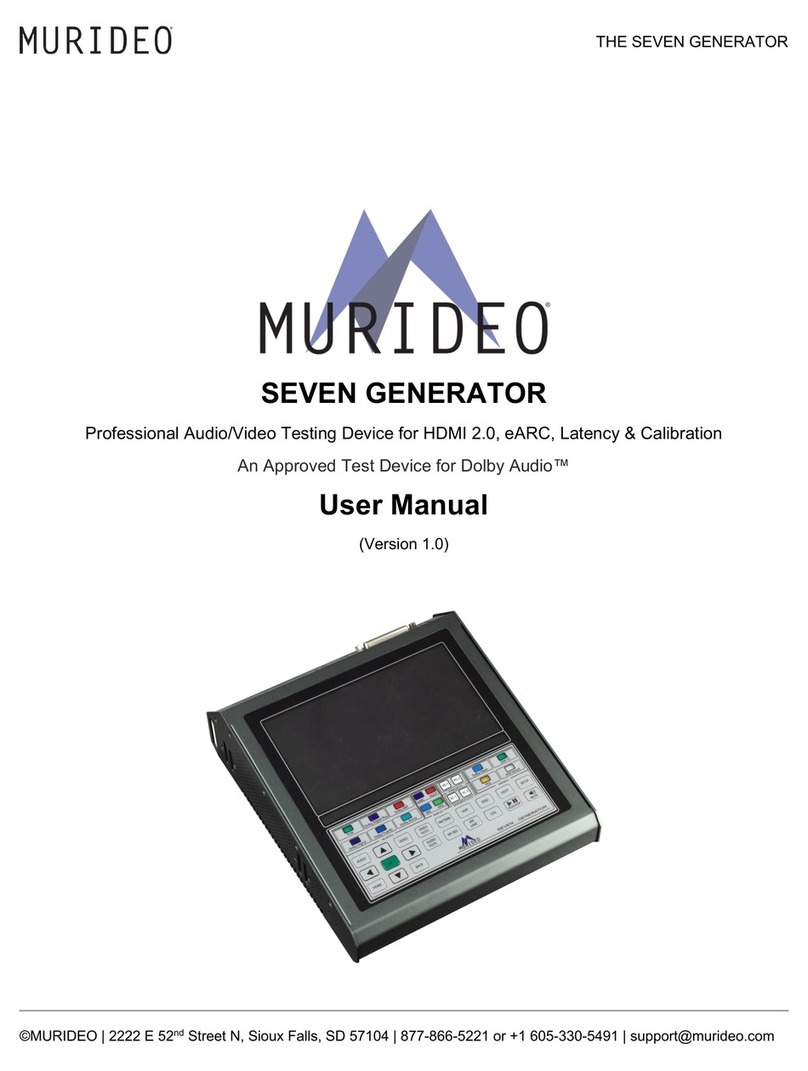
Murideo
Murideo THE SEVEN GENERATOR user manual
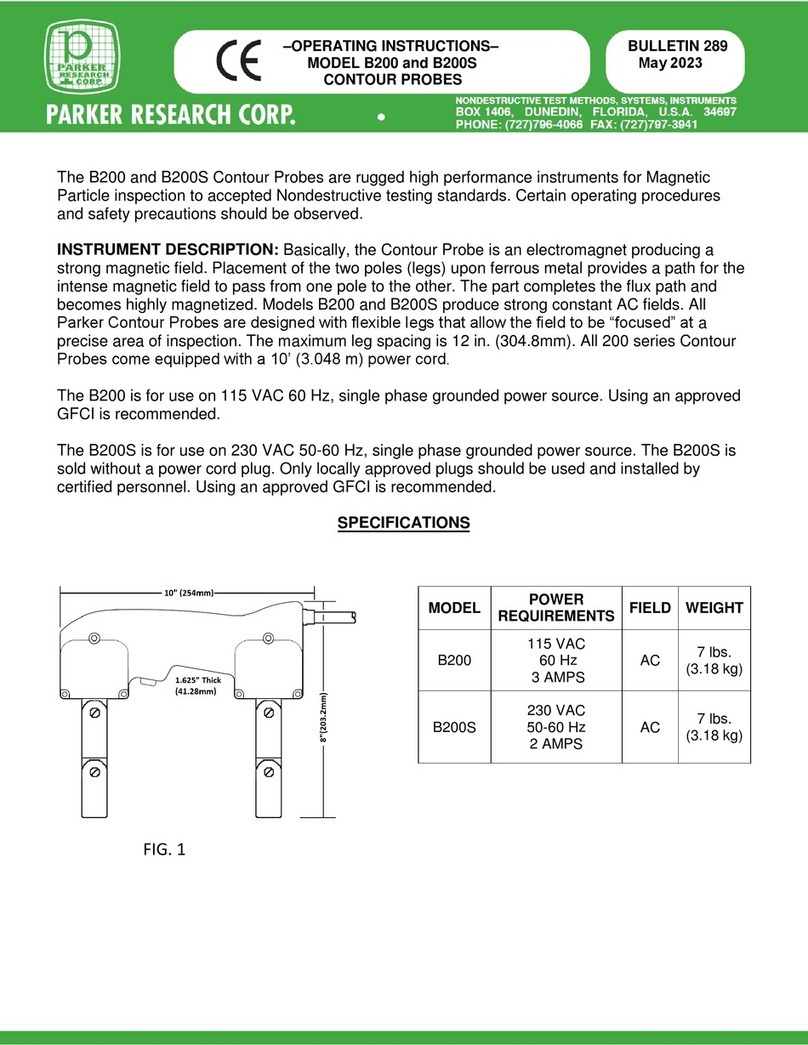
Parker Research Corp
Parker Research Corp B200S operating instructions

Amptec Research
Amptec Research 620VN Operation & maintenance manual

Rishabh
Rishabh RISH INSU 5Dt operating manual
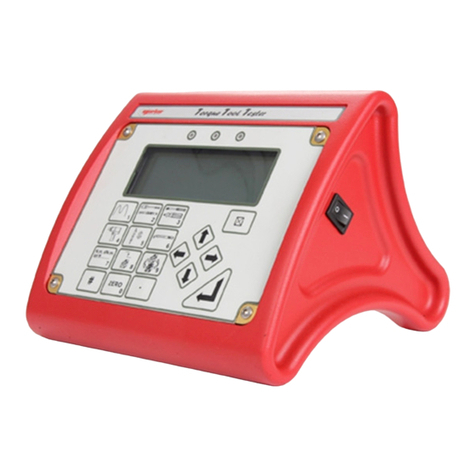
norbar
norbar 43228 Operator's manual
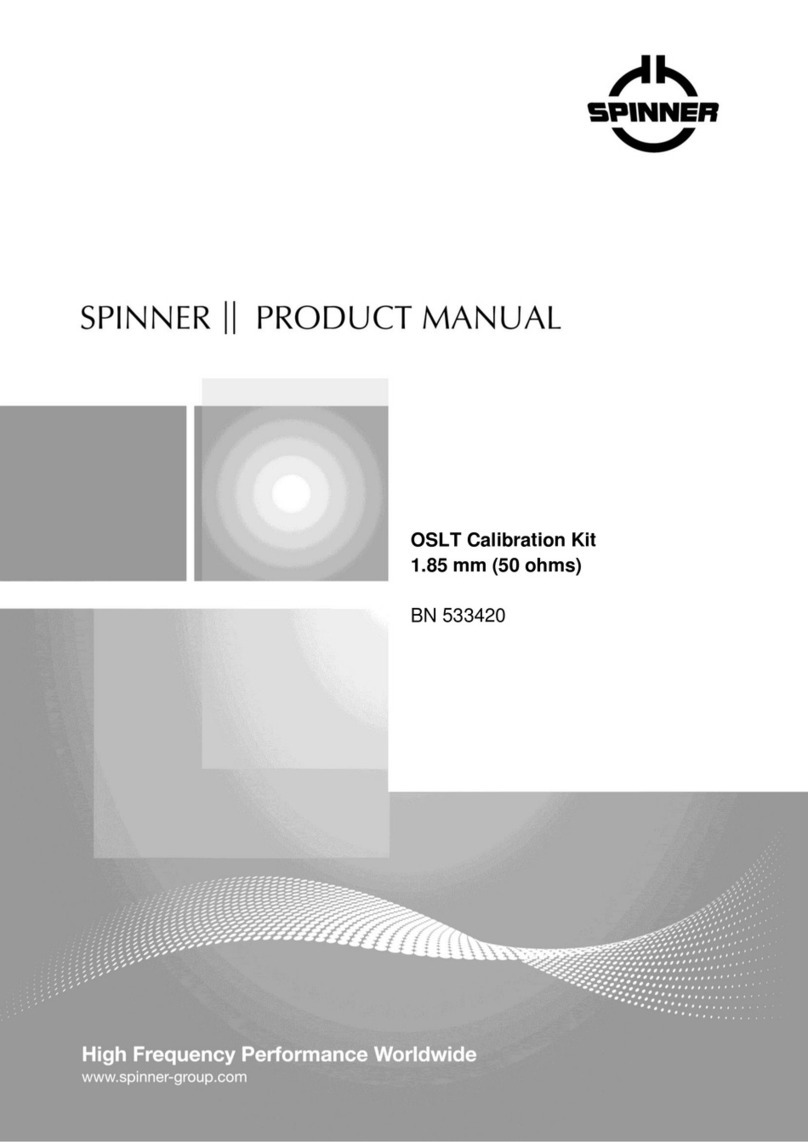
Spinner
Spinner BN 533420 product manual
